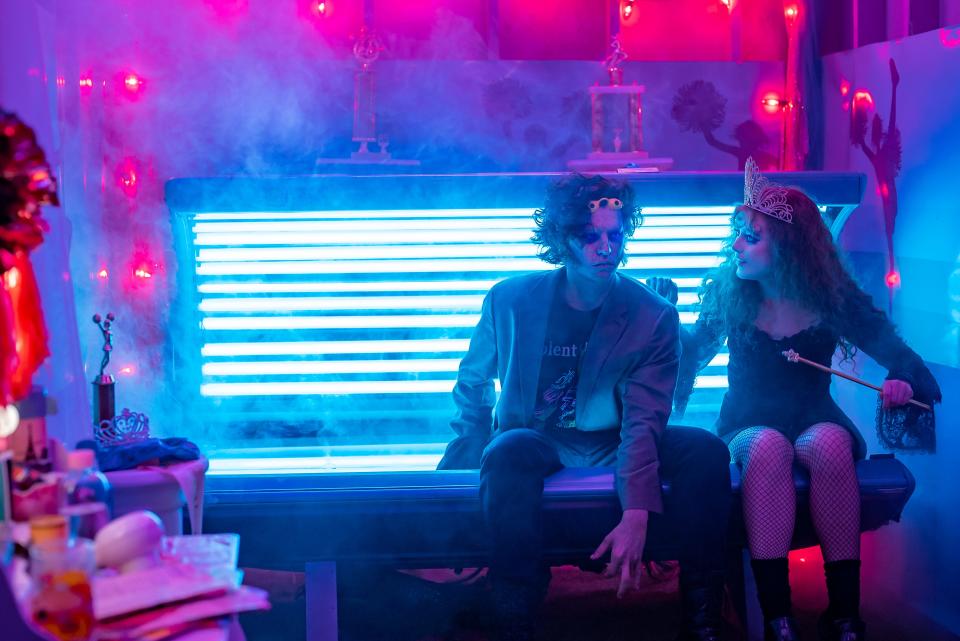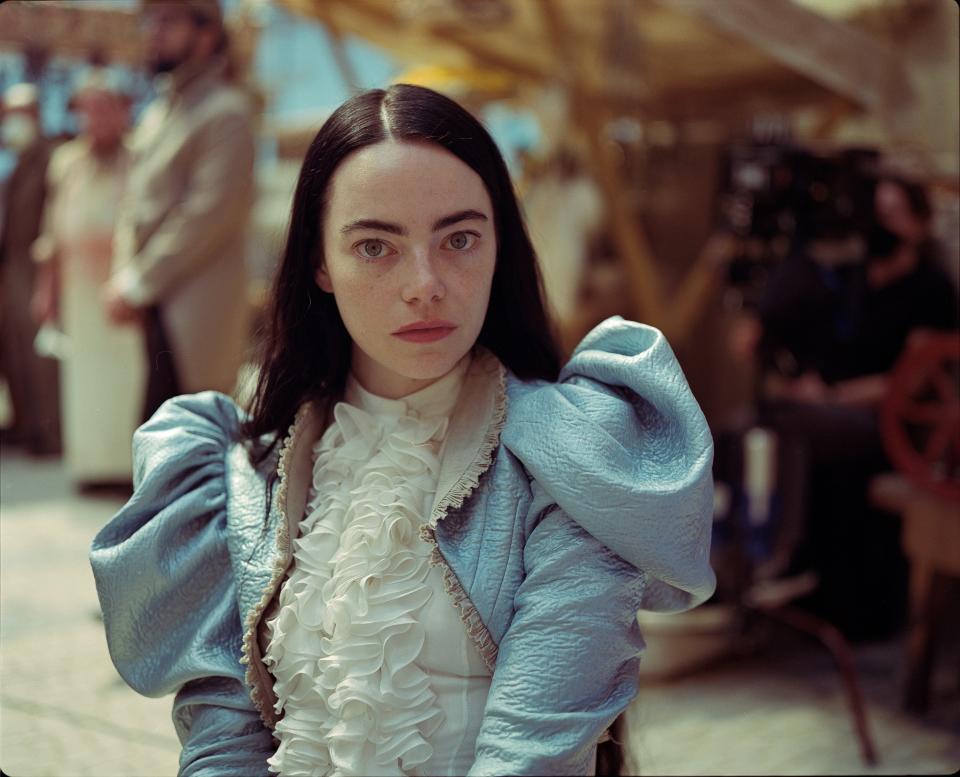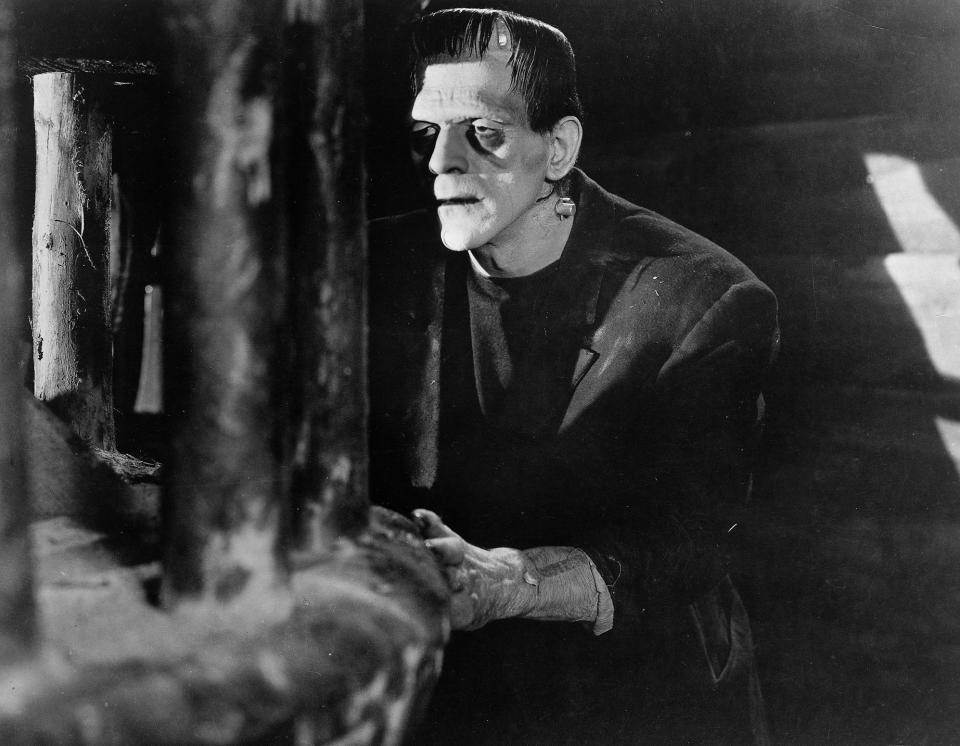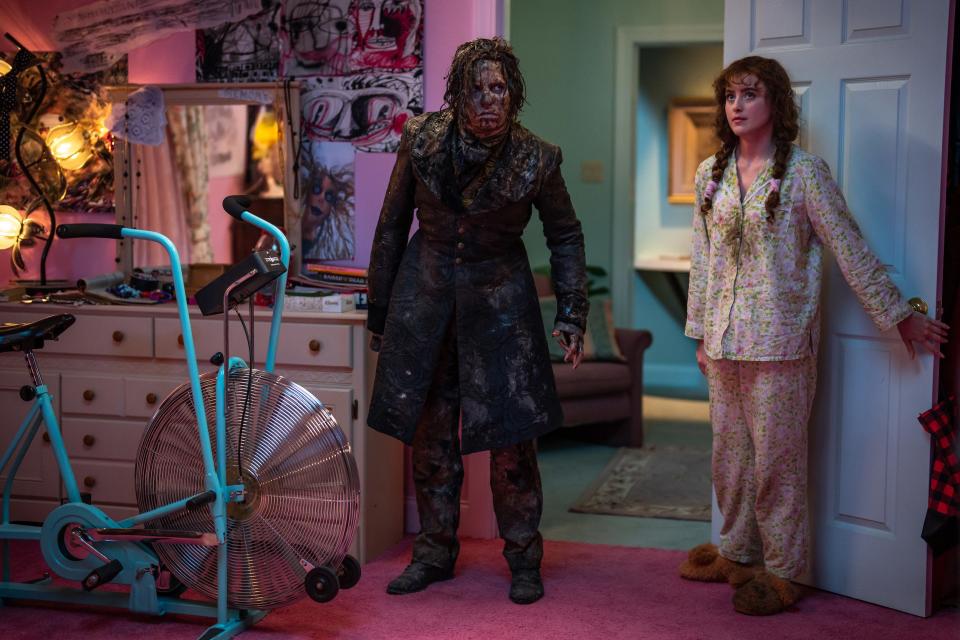'Lisa Frankenstein,' Oscar fave 'Poor Things' reclaim Mary Shelley's feminist mythos
- Oops!Something went wrong.Please try again later.
- Oops!Something went wrong.Please try again later.
Another “Frankenstein” film, another chance to come up to the lab and see what’s on the slab. In the horror comedy “Lisa Frankenstein,” however, the electrifying reanimation device was almost a 1980s hair crimper.
Played by Kathryn Newton, goth girl Lisa Swallows brings a dead Victorian dude back to life, attaching various found body parts to Cole Sprouse’s accidentally resurrected corpse. But the styling tool wasn’t doing the job for screenwriter Diablo Cody. Then an idea came that was her “Frankenstein lightning strike”: She swapped the crimper for a malfunctioning tanning bed, akin to the ones she saw rich girls had growing up.
“Those have always looked like coffins, like some kind of scientific slab,” Cody says.
“Lisa Frankenstein” (in theaters Friday) is the latest movie with its own take on the now-familiar mythos unleashing an experimental creation, first told in Mary Shelley’s classic 1818 novel “Frankenstein” and popularized a century later by the 1931 Boris Karloff horror movie. There’s a mini-resurgence at play where filmmakers are reinventing this timeless tale with elements of female empowerment and modern fears.

Last year’s “The Angry Black Girl and Her Monster” offered a young genius bringing her brother back from the dead after a gang shooting. “Poor Things,” up for 11 Oscars next month, features best actress nominee Emma Stone as a reanimated woman who gets a second chance at a better life. And monster-movie master Guillermo del Toro is about to start production on Netflix’s “Frankenstein,” an adaptation of Shelley’s tale with Oscar Isaac as the egotistical Dr. Victor Frankenstein and Jacob Elordi as his creature.
“It's always been about playing God and creating life. I don't think that's lost its allure for anyone over the course of history,” Cody says of the original “Frankenstein.”
“There’s no doubt, even in our secular society today, that the theme of ‘transgression’ beyond the limits of what is deemed acceptable for human knowledge continues to fascinate ‘Frankenstein’ audiences more than 200 years later,” says Peter J. Capuano, associate English professor at the University of Nebraska-Lincoln.
'Lisa Frankenstein' review: Goth girl meets cute corpse in Diablo Cody's horror rom-com
‘Lisa Frankenstein,’ 'Poor Things' return 'Frankenstein' to the feminine perspective

Cody points out that most retellings feature a doctor figure who is male, though “Poor Things” and “Lisa Frankenstein” both focus on female narratives, from different viewpoints. In the former, Stone’s “creature” Bella Baxter matures from a child-like state to a free-thinking woman, and in the latter, Lisa is the “creator” who takes in a previously undead, speechless but strangely caring figure (given life via lightning strike) and, through murderous means, completes him.
For “Lisa,” Cody wanted to throw it back to the legend’s origins through Shelley. “What if you flipped the script and it was about a woman creating her ideal partner, which in this case is a genteel undead Victorian man? In Lisa's case, he's just what she needs in her life,” the writer says. “He’s the first person to really listen to her in a long time, and he validates her feelings and he doesn't interrupt – because he can't."
'Poor Things': How sex (and sweets) helped bring Emma Stone's curious character to life
Mary Shelley’s classic novel ties into modern themes (thanks, AI and COVID)

Shelley’s “Frankenstein” and the iconic 1930s movie leaned into the theme of technology run amok. “The fact that we have all this cultural anxiety around AI right now could be an underlying subconscious reason for why everyone is revisiting these ‘Frankenstein’ myths all of a sudden," Cody says. "We are excited about our ability to create this thing, and then we're scared of what the implications could be.”
The 19th-century novel has been interpreted in recent years as “a dire warning about the dangers of scientific hubris” in regard to nanotech, synthetic biology and especially AI, Capuano says. That’s where “we see the convergence of old themes such as Victor Frankenstein’s neglect of his creation – which is what spurs the creature to act monstrously – and new societal fears,” Capuano says. While there have always been fears about unintended consequences with technological creation, “the exponential growth of AI in the past few years has spurred a whole new, more widespread – and perhaps more real – fear of human obsolescence.”
Additionally, the aftermath of pandemic lockdown has spurred "real fears of the social damage that being isolated from other humans can have,” Capuano adds, recalling that in Shelley’s novel, Victor Frankenstein can only create his artificial being when he locks himself away from others.
Frankenstein's movie history: The good, bad and ugly
The new Frankenstein’s Monster takes a turn toward the attractive

In contemporary “Frankenstein” imaginings, the creature has moved far from the Karloff days of a giant figure with a flat-topped noggin and bolts protruding from his neck. In 1975’s “The Rocky Horror Picture Show,” the title creation is a musclebound blond adonis and in 1985’s “Weird Science,” a freak electrical accident brings Kelly LeBrock to life. And in "Poor Things," Stone's character is the object of several men's sexual cravings.
“The original ‘Frankenstein’ story was about power and playing God, less so than being about desire. Latter-day retellings of the legend are definitely more about wish fulfillment,” Cody says. With “Weird Science,” the creators are “these two teenage boys so of course they want to create the hottest woman imaginable.”
And in “Lisa Frankenstein,” the Creature is made more attractive through Lisa’s love and care. "He arguably doesn't look great when he first comes out of the ground. So he has a glow-up like Lisa.”
This article originally appeared on USA TODAY: 'Lisa Frankenstein,' 'Poor Things' give Mary Shelley modern resonance

